Los Angeles County Museum of Art (LACMA) — David Geffen Galleries
Los Angeles, California, United States
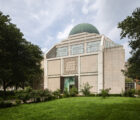
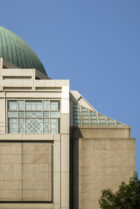
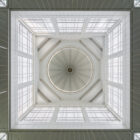
As the first mosque and religious center built specifically for New York’s growing Muslim community, this cultural center represents Islam’s rich and varied traditions in a contemporary architectural context.
In 1987, a group of representatives from Islamic member states of the United Nations (UN) commissioned SOM to design New York’s first ground-up mosque. The member states, led by Kuwait, sought to provide the city and UN delegates with a religious and cultural center that reflected its Manhattan location while bringing originality to the city’s architectural scene. SOM encouraged this large client group to create a blend of old and new—a building that fused classical Islamic architecture with contemporary design, emphasizing the importance of geometry, abstraction, and natural light.
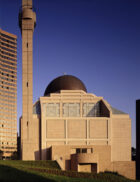
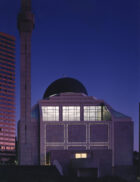
To coalesce a traditional and modern aesthetic, the design of the Islamic Cultural Center relies largely on geometric patterning. Square in plan and cubic in three dimensions, the mosque is supported by a structural system of four intersecting steel trusses, which form a nine-square grid that supports the building’s copper dome and creates a column-free interior. The system likewise informs the external appearance of the building, which is organized into three sections: a lower tier of granite, glass and granite setbacks in the middle, and the dome above.
Following religious law, the prayer hall is oriented toward Mecca, a rotation of 29 degrees from Manhattan’s orthogonal street grid. This shift in geometries offers several benefits: it distinguishes the building within the streetscape, maximizes the entry of natural light inside, and creates space for a forecourt outdoors where worshipers can gather prior to the call for prayers.
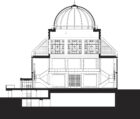
The interplay between solid granite and diaphanous glass elements characterizes the building’s exterior and interior. Light enters the cultural center at various points—through glass strips in the facade, a glass inset beneath the dome, and clerestory windows with fritted ceramic patterns—to emphasize a progression through the space. Additional illumination is provided by a ring of lights suspended from the dome, and an abstract arch of cut glass sits behind the 15-foot-tall bronze entry doors. Opposite this portal is a glass-paneled mihrab, or niche, indicating the direction to face during prayer.

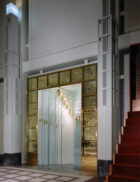
The Islamic Cultural Center was designed to age gracefully over time, and in the decades since its completion, the building has met that goal. The trees on the site have grown to create a lush and shaded green space outside, and the copper dome has fully oxidized. Its patina color now blends with the trees, the masonry facade, and the arch motif at the building’s entrance.
Los Angeles, California, United States
01/